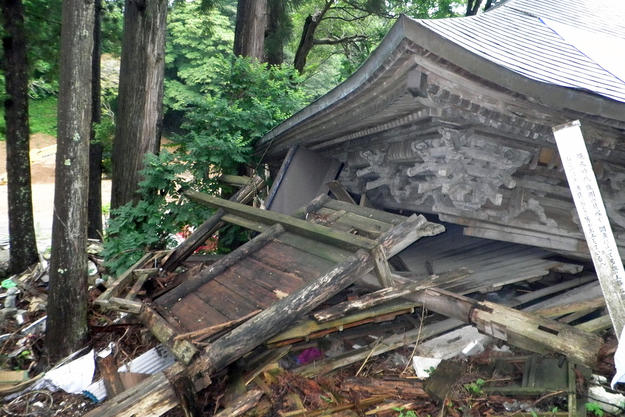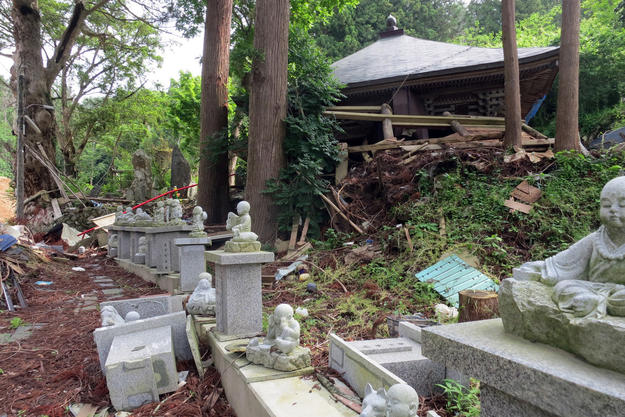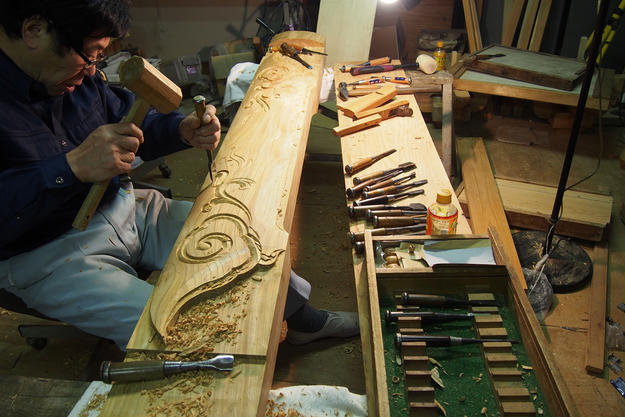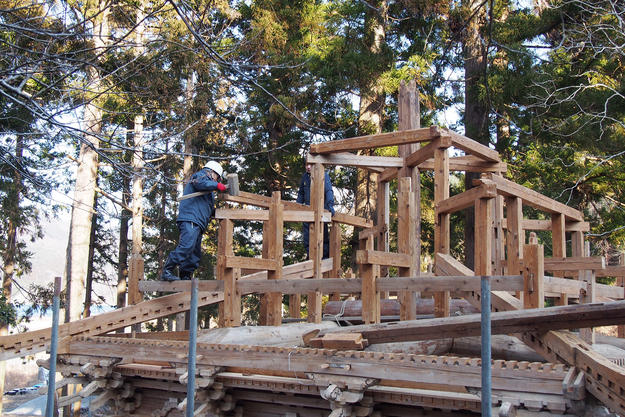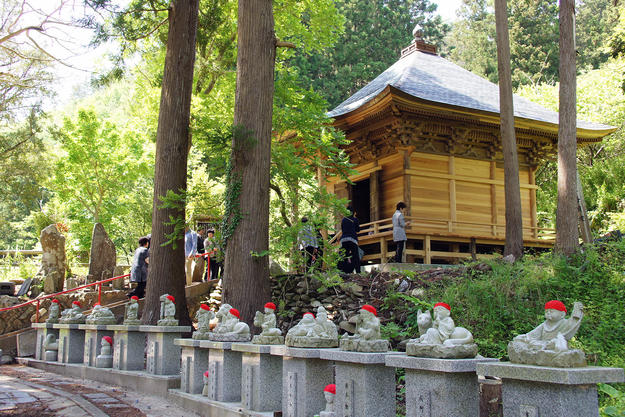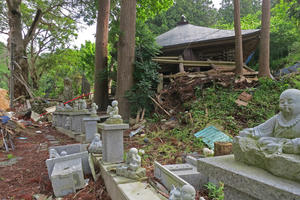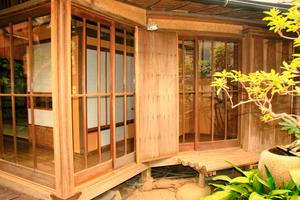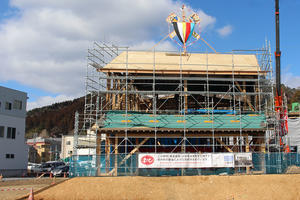Tenyu-ji Temple, the only temple in central Ogatsu, was founded in 1390 and had more than 500 parishioner families. For more than 600 years, the temple has been the spiritual heart of the local community.
Among the many buildings that stood on the temple grounds, Kannon-do (Deity of Mercy) Hall, constructed in 1766 during the mid-Edo period, is the oldest remaining structure. It was built by a group of carpenters from neighboring Mano Village. The hall is a place where local residents come seasonally for Buddhist rituals. The cultural values of this historic hall were acknowledged in 1977 when it was designated as the City’s Cultural Property.
The tsunami brought about by the devastating earthquake that hit the northeast coast Japan on March 11, 2011, struck heavily on Ogatsu. Located in the deepest area of the bay where the tsunami’s largest blows were experienced, the structures that make up Tenyu-ji Temple were destroyed. Kannon-do Hall was washed away from its foundations, but remained on the temple grounds having been caught by chance on surrounding tall fir trees. Much of the building could be retrieved, with the structure above the eaves mostly intact.
Preserving the spiritual center of Ogatsu
In November 2011, World Monuments Fund and the Foundation for Cultural Heritage and Art Research launched Save Our Culture (SOC), an international effort to help cultural heritage sites affected by the disaster in Japan. Following the inclusion of the East Japan Earthquake Heritage Sites on the 2012 and 2014 Watch, and in cooperation with American Express, we worked with the Executive Committee of Ishinomaki Cultural Heritage Restoration and Reconstruction to restore the Kannon-do Hall at Tenyu-ji Temple.
The restoration of the eighteenth-century building was completed by around 600 skilled craftspeople in May 2015. The successful restoration helped the cultural property to recover to its original use, and it serves as an inspiration to the community and to other rebuilding communities in the region.


